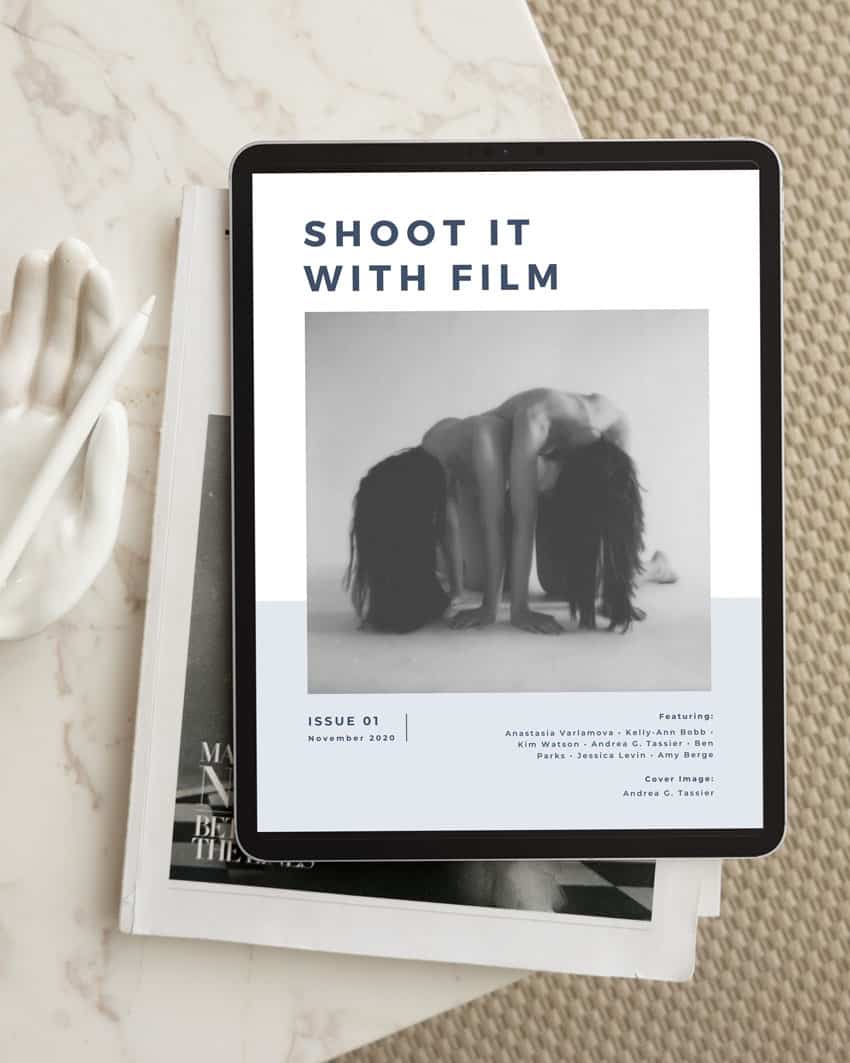
Written by Raufan Yusup
When Harman first dropped Phoenix, I remember thinking, “Wow, a brand-new color film in 2024,” that’s already crazy enough. And true to their word, it really did feel “experimental.”
The first Phoenix was chaotic, unpredictable, sometimes frustrating… but kind of exciting in its own way. (Although, spoiler alert, it seems like it’s not my cup of tea.)
And recently they’ve released Phoenix II, which is supposed to be a more refined version. So I shot both on 35mm (and the 120 version for Phoenix II), did some exposure tests, and compared lab and home scans as well. Here’s how it went for me…
Find Harmon Phoenix film on Amazon.

Shooting Harman Phoenix I — Kinda Chaotic lol
Shooting Harman Phoenix I honestly felt like rolling dice. The grain is huge, the colors are bold and warm, and if your metering is even slightly off, you’ll notice it right away. Shadows go muddy, highlights blow out.


It’s hard for me to say “OK, this photo is good” on the results of my first roll on this film. I made sure that I metered correctly to avoid mistakes on my end. Some of my shots came back with this gritty, punchy vibe that I haven’t seen from other films.
It’s messy, but it has character. But, I don’t think this film is for me.


The thing is, it’s not an easy stock to live with. Scanning is tricky without the orange mask, and in 35mm especially, that chunky grain can overwhelm the details.
Some people found it easier to work with in 120, where the bigger negative calms things down a bit.



Phoenix I Exposure Test
I also did a little exposure test with Phoenix I, just to see how much room this film actually gives. And honestly, it doesn’t give much.
The overexposed +1 shot looks decent, but as soon as I overexposed by two, highlights blew out fast and the colors shifted in unpredictable ways. Box speed wasn’t any kinder, shadows turned muddy and grain swallowed up the details.
This test confirmed what I already felt while shooting: Phoenix I has very narrow latitude, and it really demands accurate metering if you want consistent results. In 120 you might can get away with a bit more, but in 35mm it’s a tightrope walk.




Phoenix I Lab Scan vs Home Scan
Here’s an interesting one. The photo on the first photo below if from the lab, and the second is my own scan. Same negative, totally different look.
The lab version came back with this really strange, almost nuclear color shift that just doesn’t match what I saw when I shot it. My scan feels closer to reality, even if it’s not perfect (FYI, I didn’t do anything crazy. Just a normal convert and slight adjustments).
I think part of this comes down to Phoenix being such a new film. A lot of labs still aren’t used to handling it, and the results can end up looking way off. It’s one of those stocks where doing your own scans really pays off, at least for now.


Harman Phoenix II — A Big Step Forward
Phoenix II feels like Harman went back to the lab and actually listened. It’s not just a little tweak, it’s a pretty good upgrade.


The colors are more balanced, shadows hold detail, and it gives you more room to mess up exposure. Grain is still very visible, but in medium format it has this crunchy texture that actually looks nice.


In 35mm, it’s still unforgiving. Underexpose and it turns ugly fast. Highlights also bloom with halation (yellow halation, which is interesting to me), which you’ll either find beautiful or distracting.
Greens and blues feel a bit more under control too. Phoenix II still has quirks, but I could see myself using it again, especially in 120.



Phoenix II Exposure Test
For Phoenix II, I also tried a little exposure test, and, right away, it felt more forgiving compared to the first version.
The correctly metered frame holds up well. Colors look balanced, shadows keep some detail, and nothing goes completely crazy.
When I pushed it off a bit, the film still showed its character: grain becomes more obvious and contrast jumps, but it didn’t fall apart as harshly as Phoenix I. It’s still not a wide-latitude film like Portra or Gold, but at least with Phoenix II you’ve got a bit of room to breathe. That alone makes it feel less stressful to shoot.



Phoenix II Lab Scan vs Home Scan
Here’s another lab vs home scan example, and once again the difference is night and day.
My scan (the second one below) feels closer to what I actually saw. The colors are a bit muted but still believable. The lab scan, on the other hand, came back with strange shifts that don’t really suit the scene at all.
I think the reason is the same as with Phoenix I: this film is still new, and not every lab has figured out the best way to handle its quirks. Until they do, I feel like home scanning is the safer option if you want results that actually represent what you shot.


Who Is This Film For?
Phoenix I is for people who enjoy unpredictability. If you love that lo-fi, experimental vibe, it’s your playground.
Phoenix II is for people who want character but also a fighting chance at consistent results. It’s not Portra or Gold, it’s not smooth or safe. But that’s exactly why some will love it.


My Takeaway
I’ll be honest: I don’t think either Phoenix will become part of my regular rotation. They’re just not the easiest to work with.
But here’s the thing, as a film photographer, I feel like part of my job is to support the people actually making film and support this community who want to keep film alive. That means not only buying a roll now and then, but also giving honest, constructive feedback. Phoenix I and II both pushed me, annoyed me, and surprised me. That’s not a bad thing.
So yeah, I’ll probably pick up Phoenix II again, maybe on 120 only. Next time with better metering, and maybe better light, to see what else I can get out of it. Because even if it’s not perfect, it’s exciting to see new film being made. They said they’ll keep improving and it’s exciting for me.

Thank you so much, Raufan! Raufan is a regular contributor here at Shoot It With Film, and you can check out more of his work on Substack, YouTube, Instagram, and Twitter.
Leave your questions about Harman Phoenix I and II below in the comments, and you can pick some up for yourself here on Amazon.








Blog Comments
Danny
November 7, 2025 at 11:01 am
I had to set up a home scanner, too, after some disastrous results from the local lab. Either the tech or the machine didn’t know how to handle the b&w negatives. Those negs were more washed out than a load of laundry.
Thanks for the info about Phoenix. I need consistency of good results when I purchase film, and accurate colors. I’ll leave the wild color shifts to the Experimentalists.
Raufan
November 13, 2025 at 2:04 am
Thank you for reading!
Phoenix II seems to be more consistent compared to the first one, but of course with pushing the exposure a little bit.
Eddy
November 7, 2025 at 1:42 pm
Nice photos. I like the lab scans the best. I shoot experimental film for experimental quirky unique results. And have been told to shoot it at 100 instead of box speed or higher. I did shoot phoenix 1 in 120 for long exposures.
Raufan
November 13, 2025 at 2:05 am
Thank you for reading!
Actually I tried again twice time and it seems like now I found a sweet spot for this film as well as found the lab that understand how to work with this film.
solly Khan
November 7, 2025 at 2:15 pm
Thank you for posting these pictures,i need to test this film for myself soon. i think i shall limit or exclude a lot of the greenery and include urban artificial light, portraits with window light etc.
Raufan
November 13, 2025 at 2:06 am
Thank you for reading! I tried again Phoenix I with overexposing it by 2 stops, it seems like it’s better! You should give it a try too.
Charlie
November 7, 2025 at 11:52 pm
The original Phoenix would be shot at 125ISO and metered for the shadows. This is literally what the Harman guys in lab coats that helped make the stuff said in one of the analog YouTubers videos when it first came out. I think it was a Grainydays video on an Ilford/Harman tour. I’ve shot 5 or 6 rolls (35mm and 120) like that and it’s always come out nice for me.
I’ve only shot one roll so far of Phoenix II in 35mm and using the same settings – it looks great! Even better than the original, but I’d shoot either version of someone handed it to me.
Raufan
November 13, 2025 at 2:06 am
Thank you! Yeah, I just tried again with 2 stops overexposed with more stable lighting condition and it seems now come out pretty nice!